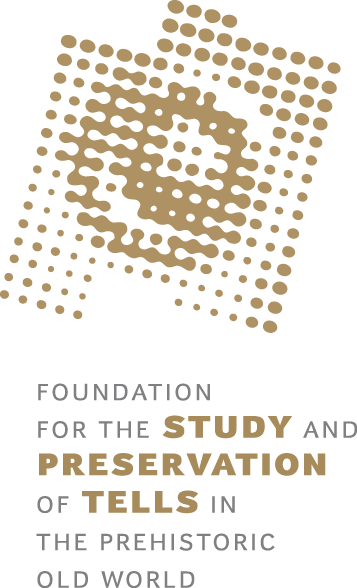
Our Mission
Funding
FUNDED PROJECTS
Donations
Who We Are
Time Will Tell: The Vésztő-Mágor Conservation and Exhibition Program
Attila Gyucha (Athens/GA, USA), William A. Parkinson (Chicago/IL, USA), Paul R. Duffy (Kiel, Germany), Ashley Lingle (Cardiff, UK) and Jerrod Seifert (Cardiff, UK)
The multi-year conservation and mitigation program focuses on the Vésztő-Mágor tell in southeastern Hungary. The site is the largest prehistoric tell on the Great Hungarian Plain with about 7 m of stratified cultural layers dating to the Neolithic, Copper Age and Bronze Age, and is part of an archaeological and historical park – the Vésztő-Mágor National Historical Park (henceforth, Park). The Park features a unique, in situ exhibition of an excavation trench into the tell with stratigraphic profiles and exposed features and objects, an archaeological museum in a wine cellar dug into another portion of the tell, and a partially reconstructed medieval monastery on top of the site. The 19-x-4.5-m in situ trench was opened in 1986 in the central part of the tell that later was covered with a permanent, closed structure to facilitate public access.
The ‘Time Will Tell: The Vésztő-Mágor Conservation and Exhibition Program’ concentrates on the stabilization, preservation, and state-of-the-art presentation of the in situ exhibition. Over the past decades, the exposed profiles in the in situ exhibition have crumbled to an extent that immediate action is required in order to preserve the tell from further decay and to keep this key element of the Park open for visitors. The conservation program also provides an opportunity for the Park to develop a new exhibition showcasing the archaeological features and objects excavated in 1986 as well as exposed over the course of the conservation process.
The first phase of the program, funded by the Foundation for the Study and Preservation of Tells, will occur in the summer of 2022. During this phase, the cutting back and stabilization of the stratigraphic profiles and the conservation of the exposed features and displayed artifacts will be carried out within the most deteriorated, northern section of the in situ exhibition. Geotextile and a sacrificial layer of earth at the base of the walls will be applied to enhance the stability of the cleaned profiles through the mitigation of basal deterioration. In addition, using dataloggers to track temperature and relative humidity throughout the shelter and profile probes to explore how moisture moves within the profiles and get fast feedback on how any modification to the environment affects the exposed as well as the underlying sediment, the project will collect data to select a method for climate control that is capable of minimizing detrimental fluctuations of temperature and relative humidity levels in the shelter. All conservation works implemented under the project will serve three main purposes, including capacity building, preservation, and engagement. For the greatest overall impact and sustainability, activities will include archaeologists, conservators, other specialists, and students.
Over the coming years, stabilization process will be completed across the rest of the exhibition, the shelter will be insulated, a climate control system will be installed, along with an environmental monitoring and a water spraying system, to ensure the long-term preservation of the exhibition. The final phase incorporates the fundamental rejuvenation of the exhibition using the most advanced technologies and tools to attract visitors.
The Park is an integral part of the local community and the program will help ensure that it will be preserved as a thriving center for local identity and regional congregation. Additionally, the Time Will Tell: The Vésztő-Mágor Conservation and Exhibition Program will promote and encourage the preservation and conservation of tells and their presentation to the public elsewhere in the world, and will establish best practice guidelines for conservation procedures in similar in situ contexts.
Funding period: 2022–2024

